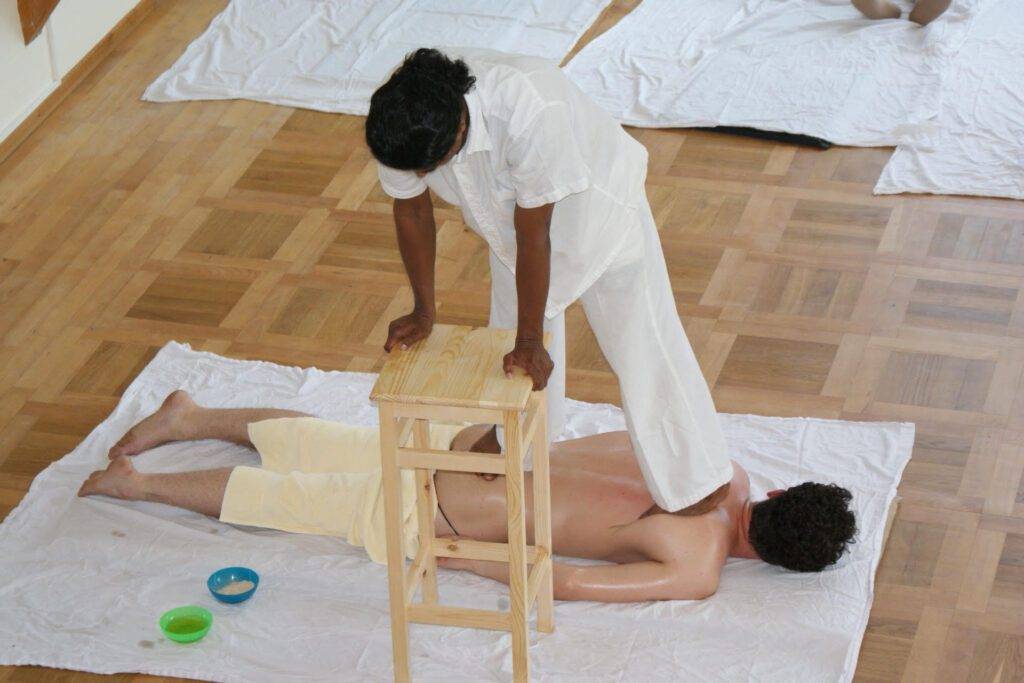Many of us are looking for roads beyond traditional medicine alone to more profound well-being in our ever-more difficult and sometimes overwhelming world. We look for ways of treatment that help to cure not only physical symptoms but also the spiritual and emotional causes of imbalance. An old discipline going through a great comeback, sound healing provides a distinctive mix of scientific theory and spiritual wisdom for deep change.
Picture a universe where your very cells hum in harmony, where stress melts away with the gentle chime of a bowl, and where a deep emotional resonance gong helps release. This is the possibility of sound healing, a potent, non-invasive route getting acclaim for its capacity to promote emotional resiliency, calm physical ailments, not a fairy Diseases link us to our innermost selves as well as help us.
What is Sound Healing? (Instruments, Frequencies, Traditions)

Fundamentally, sound healing is the medical use of sound frequencies and vibrations to both body and mind. It’s about feeling sound as a physical force interacting with our whole self, not about listening to music in the traditional sense. Though it might seem new to some, its origins are old and entwined into the fiber of human history over several societies.
From the drumming ceremonies of indigenous shamans to the Gregorian hymns of European abbeys, from the didgeridoo, Sound has always been a portal for healing, spiritual connection, and changed states of consciousness in Aboriginal Australian ceremonies. These customs instinctively knew what contemporary science is now starting to corroborate: sound is very powerful.
Today, sound healing usually makes use of a variety of instruments, each with its own vibrational signature:
- Hand-hammered metal bowls known as Himalayan Singing Bowls make rich, sustained notes when played with a mallet. Their sophisticated undertones resound across the entire body and are very relaxing.
- Built from pure quartz crystal, Crystal Singing Bowls create clean, clear tones usually tuned to particular energetic chakras. Deep meditative conditions can be brought on by their spectral nature.
- Perhaps the most potent sound healing tool, gongs produce a broad range of harmonics and overtunes that may engulf the listener, therefore promoting deep release and cellular re-patterning.
- Calibrated to certain frequencies, tuning forks are sometimes used directly on the body to target particular areas or energy points, therefore fostering local healing and energetic harmony.
- From frame drums to djembe, rhythmic drumming is grounding, energetic, and used to induce modified states of awareness for shamanic travel.
- The human voice is a potent instrument, voice and chanting. Toning, chanting, and overtone singing can produce certain vibrational frequencies in the body useful for expression and self-healing.
- Shruti Box is an Indian instrument producing a drone backdrop to help singers and establish a sustained harmonic field.
The thought behind the sound takes first place. Effective sound healing depends not only on frequency but also on the purposeful orientation of that frequency toward balance and healing.
How it Works: Vibration, Resonance, Energetic Anatomy (Chakras, etc.)

Understanding how sound cures starts with recognizing that everything in the cosmos—including us—consists of vibrations. Everything is always in motion, radiating its own distinctive vibrational frequency from the subatomic particles in our cells to the planets in our solar system.
We make great sound and vibration conductors since our bodies are around 70% water. Sound waves go through our tissues, bones, and organs in addition to registering in our ears when they interact with our bodies. Here is where the ideas of vibration and resonance come into practice.
Our cells resonate when a sound wave hits our bodies; this vibration is known as vibration. Varied frequencies have varying consequences. Higher frequencies can be expansive and psychologically uplifting; lower ones can be grounding and physically stimulating. These vibrations can access regions unreachable by conventional treatments by penetrating deeply into the body.
Every organ, cell, and system in our body has a preferred resonant frequency, a natural, healthy vibrational state. These frequencies can become discordant or out of sync when we are stressed, sick, or emotionally imbalanced. Similar to tuning a piano, sound healing helps to restore these imbalanced components to their natural, healthy resonance by introducing coherent, therapeutic frequencies. Should one tuning fork be hit and another of the same tuning fork be left close by, the second will start to vibrate, or resonate, with the first. Our bodies behave likewise.
How Cultures Depict Sound Healing
Aside from the physical, sound healing also deeply interacts with our energetic anatomy. Many traditional cultures depict delicate energy systems inside and outside the body, including:
Seven main energy centers along the spine are chakras; each relates to particular organs, emotions, and mental conditions. Every chakra has a vibrational frequency and sound (e.g., the heart chakra with Yam, the root chakra with Lam). To remove obstructions and restore equilibrium to these centers, sound healers sometimes employ bowls or voice tones matched to these particular frequencies.
The electromagnetic field around and interpenetrating the human body is known as the Aura/Biofield. Promoting general well-being, sound vibrations can directly affect the coherence and liveliness of this field.
In yogic and traditional Chinese medicine, respectively, channels of energy through which life force—prana or chi—flows. Sound enables energy to flow more freely by clearing blockages in these pathways.
Through interacting with these vibrant systems, sound therapy can tackle the underlying reasons of imbalance rather than only the manifestations. This is a whole approach that acknowledges the connection of our physical, emotional, and spiritual selves.
Research Evidence: What Science Says About Healing with Sound (Sleep, Stress, Anxiety, etc.)
Although sound healing‘s experiential advantages have been acknowledged for millennia, modern science is now aggressively researching and verifying its effectiveness. Although still developing, research is clarifying the psychological and physiological processes at work.
The autonomic nervous system is among the most regularly noted advantages of sound therapy. It enables us to transition from the fight or flight (sympathetic) condition to the rest and digest (parasympathetic) one. This change is vital for recovery since it lowers cortisol levels (the stress hormone) and fosters relaxation.
Important fields where research shows encouraging results are:
Studies have found that even brief sound bath sessions can greatly lower felt stress and anxiety. Participants usually describe themselves as very laid-back and composed, a condition conducive to healing.
Studies show that sound therapy can alleviate depression and anxiety symptoms. The soothing vibrations, together with the contemplative condition brought on, assist in silencing the overactive mind and encourage emotional control.
- Better Sleep: Sound healing may be a great tool for enhancing sleep quality by helping people unwind and quiet down their mental chatter. Many people claim to sleep better, more deeply, and more rejuvenated after sound treatment.
- Pain Management: Although not a treatment for chronic pain, good vibrations can help to ease pain by loosening muscles, lowering inflammation, and refocusing awareness away from pain sensations. Some research indicates it may lower pain awareness.
- The relaxation response produced by sound healing usually results in lower blood pressure and heart rate, therefore supporting cardiovascular health.
- The immune system works best when the body is in a calm, parasympathetic state. Reducing stress helps to improve the immune response by extension.
- Anecdotal data backed up by some psychological studies shows sound’s capacity to enable emotional release. The vibrations assist in releasing repressed feelings, therefore letting them rise and be handled in a secure, kind manner.
Much of this research aims to fairly assess the alterations happening in the body using neuroimaging techniques and physiological indicators (heart rate variability, skin conductance). and the brain during and after sound therapy. The results invariably highlight sound as a powerful means for modifying our mental and physical condition toward more equilibrium and well-being.
Sound Healing & Yoga Combined: How Asana, Meditation, and Sound Deepen Each Other
Sound healing combined with the age-old tradition of Yoga produces a very symbiotic and transforming experience. Both approaches seek to reconcile body, mind, and spirit; hence their union is rather powerful.
Using Asana to Get the Body and Mind Ready: Yoga asana, or physical postures, conditions the body for more profound levels of relaxation and openness. The body opens up to receiving and integrating the sound vibrations by releasing physical stress, stretching muscles, and encouraging energetic flow. Before a sound bath, a soft yoga sequence can improve the experience by letting the sound more easily permeate.
Sound serves as an anchor for the mind, thus improving meditation and especially simplifying it for novices. The listener can concentrate on the changing soundscape instead of fighting with intrusive ideas, therefore letting the vibrations softly lead them into more profound levels of awareness. Naturally slowing brainwave activity from beta (waking consciousness) to alpha (relaxed, contemplative) and even theta (deep relaxation, meditation, creativity), the sustained tones of singing bowls or gongs can help to achieve this.
Many yoga systems center on harmonizing Chakras and clearing the nadis, or energy channels. Added with sound healing, this technique becomes much more powerful. During yoga or meditation, particular sounds and frequencies can be aimed at matching chakras to improve their activation and equilibrium. For instance, a heart-opening yoga posture followed by crystal bowl sounds for the heart chakra (F note) can evoke a strong feeling of compassion and unbounded love.
Yoga stresses the need of prana, the life force, which is enhanced by means of improved Pranic Flow. Central to breathwork is pranayama, or regulation of the breath. Sound waves can improve prana’s movement around the body, therefore vitalizing and purifying the energetic system, hence enabling the advantages of pranayama to be more intensely sensed.
Savasana Redefined
The ideal conclusion for a decent healing experience is the final resting pose in yoga, Savasana. By remaining still and open, students can totally give themselves to the vibrations and let the body to absorb the physical and energetic changes that have taken place. This profound relaxation helps the healing process and leaves participants feeling very rejuvenated.
A yoga teacher in a combined session may lead pupils through light movements and breathwork, then lead them into a relaxed reclined position for a sound bath. Encouragement from the fabric of sound drives the trip from physical movement to profound stillness, therefore producing a whole experience that can be really transforming by touching every level of being.
Tips for Beginners: What to Expect, What to Bring, How to Integrate it Afterward
Starting this trip would be an absolutely fulfilling adventure if you are new to sound treatment. To support you in maximizing your first time Sound bath or session, some practical advice is:
What to Anticipate:
Most sound healing sessions take place in a calm, cozy location with sometimes dimmed illumination. Normally, you will lie down on a yoga mat or blanket.
You will sense the vibrations rather than only hear them. The vibrations will travel throughout your body, sometimes like a light hum, a tingling sensation, or a deeper resonance.
Depending on the therapist, you could hear Himalayan singing bowls, crystal singing bowls, gongs, chimes, drums, tuning forks, or even voice. The noises will probably change and develop throughout the session.
No two sound baths are precisely the same; your encounter will change every time, depending on your current condition. You could feel deeply calm, emotional, alert, or meditative. There is no single way to feel.
Many people have a change into more profound brainwave states (alpha or theta), which causes deep relaxation, clarity, or even vivid imagery and dreams.
During a sound bath, feelings often come to the surface. This is a normal and beneficial phase of recovery. Let them emerge devoid of criticism.
Sessions typically end with some quiet, which lets you slowly rise after gently returning to complete awareness.
What to Bring:
- Loose, comfortable layers let you totally relax free of constraint.
- Though some studios do supply them, bring yours if it’s your preferred kind.
- Necessary for warmth and comfort, as your body temperature can fall during profound relaxation,
Optional: For more comfort, a small cushion or pillow for your head may help.
- By shutting out light and enabling you to turn inward, eye pillows or masks can greatly enhance your experience.
- Staying hydrated is advisable, especially following a session, since sound therapy might be detoxifying.
- The most crucial items to pack: open heart and mind, release expectations, and just let yourself receive.
How to Integrate it Afterward:
- In the hours following a sound bath, drink lots of water to stay hydrated. This encourages cellular hydration and helps remove toxins.
- Rest and Reflect: If feasible, leave some silent time following the session. Steer clear of hectic activities or noisy settings; don’t hurry into them. Writing about your experience can be really enlightening.
Be kind to yourself; you could be profoundly relaxed, slightly dreamy, or even emotional. Treat yourself with kindness and acknowledge whatever comes up.
Take Note Changes: Note your emotions in the several days following. Do you see better sleep, less tension, clearer thinking, or any other changes in your physical body or emotional state?
Keep on the Practice: Whether through more sessions or integrating sound into your own, you may think of sound healing as a daily component of your wellness plan. Meditation exercise with chimes or a little bowl.
If you find yourself ungrounded, walk barefoot on grass, spend time in nature, or have a nutritious meal.
A personal one, a lovely investigation of your inner terrain, the path toward sound therapy is one. Approaching it with open-hearted inquiry can open a strong path to more physical, spiritual, and emotional well-being.
Sound healing is a complex therapy approach that connects ancient wisdom with contemporary understanding; it is much beyond simply nice noises. It reminds us that harmony is not only a conceptual notion but also a concrete condition we may develop inside of ourselves, one resonant vibration at a time. The science and spirituality of sound will help you find relief from tension, a closer link to your inner self, or a trigger for creative expression. Give a strong and easy route to wholeness and healing.






